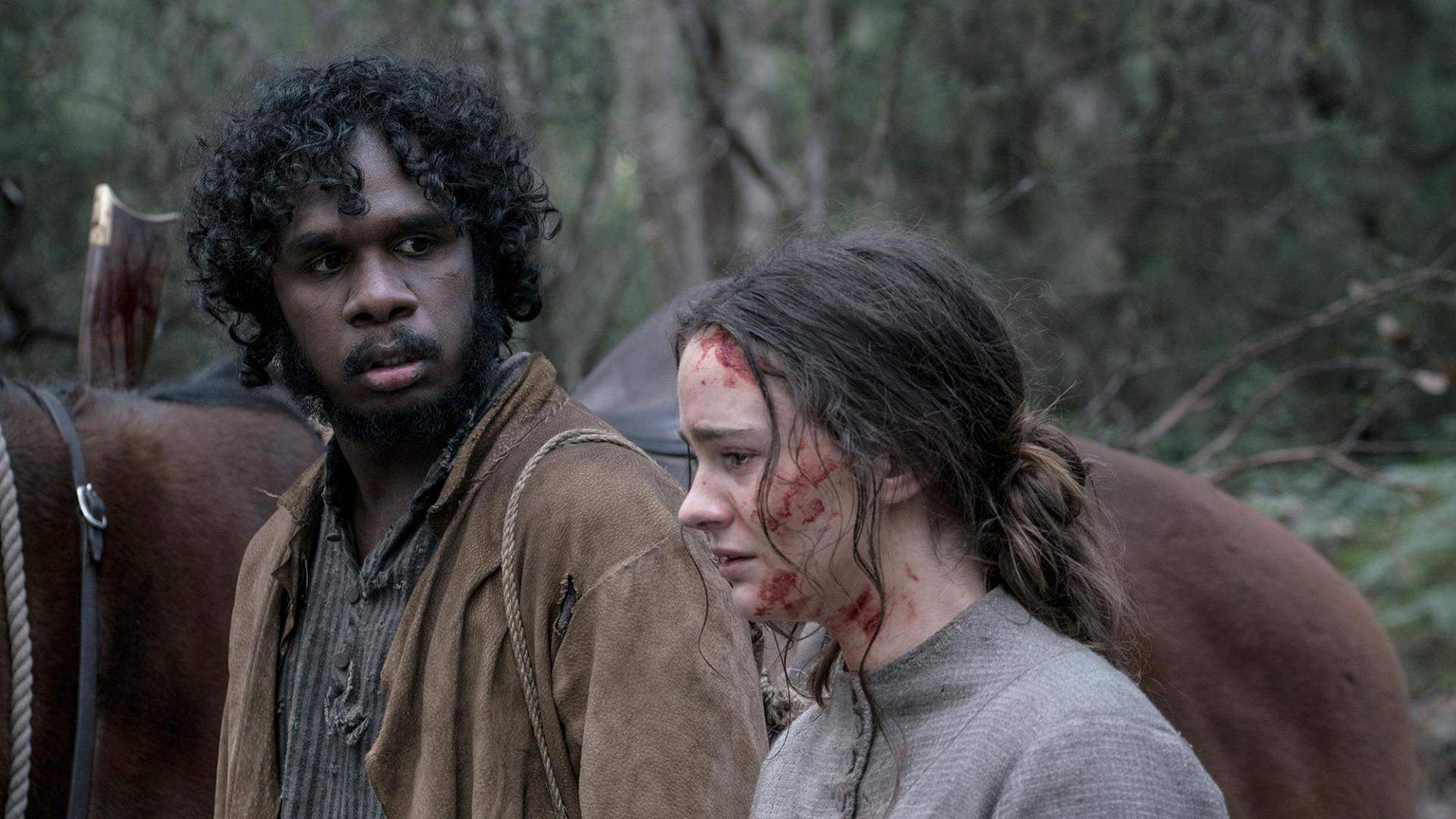The Nightingale
In her follow-up to 'The Babadook', Jennifer Kent serves up a searing and stunning tale of violence and revenge in colonial Tasmania.
Overview
UPDATE, January 25, 2022: The Nightingale is available to stream via Google Play, YouTube Movies, iTunes and Amazon Video.

With The Nightingale, Jennifer Kent proves that she has a niche, although it's not what fans of The Babadook will initially expect. Following an Irish convict and an Indigenous tracker as they trek across colonial-era Tasmania on a quest for vengeance, the writer-director's sophomore film couldn't seem further removed from the pop-up book spooks of her first movie — and yet the two couldn't make a better pair. Once more, Kent has crafted a work filled with immense horrors. The details have changed drastically, as has her style, however the unnerving effect remains the same. Carving a firm cinematic groove across just two releases, the Australian filmmaker has established herself as an artist unafraid to look pain, suffering and terror in the eye, and just as unwilling to let her audience avert their gaze.
There's nothing more harrowing to watch than someone in the throes of torment, anguish and sorrow, a fact that we all innately know in our hearts and souls. As long as narrative cinema has existed, it has reminded viewers of this, a tradition that Kent carries on masterfully. Her films unsettle and disturb with a purpose. It's unpleasant to see The Babadook's single mother fray in front of our eyes as a boogeyman leaps into her and her young son's life, and it's downright tough to realise that she has been disintegrating through grief and sole parenting responsibilities long before her new nemesis arrived. But staring at this difficult reality and grappling with its full force is the entire point. Applying the same principle, it's wholeheartedly, nerve-rattlingly distressing to witness the plight of The Nightingale's Clare (Aisling Franciosi) as she's subjected to a torrent of vicious treatment that begins with rape and only worsens. But, without truly beholding her agony, how else can we feel it — and the centuries of oppression, subjugation and cruelty across Australian history that it taps into — deep in our bones?
Banished to Australia as a teenager, Clare's sentence should be reaching its end when The Nightingale opens. The now-21-year-old has been incarcerated for seven years, including as an indentured servant, but abusive British Lieutenant Hawkins (Sam Claflin) won't grant her freedom. Instead of letting Clare start anew with her husband and baby, Hawkins keeps her as a maid, source of entertainment, and someone to thrust his will upon whenever he's drunk and in the mood. And, when she refuses to comply meekly, he imposes his might in the most atrocious fashion. Stripped of everything that she holds dear, Clare commits to tracking Hawkins across Van Diemen's Land to get revenge, enlisting the reluctant Billy (Baykali Ganambarr) as her guide through the inhospitable wilderness.
From Clare's horrific treatment by Hawkins and his cronies (Damon Herriman and Harry Greenwood), to the despairing sights she sees on her journey with Billy, Kent delves into Clare's trauma in excruciating detail. You could call her bold for glaring straight in the face of continued violence. Indeed, she is. But she's also doing exactly what the story and subject matter call for. Treading through Australia's complicated past can never be a jaunty walk. Coming to terms with how our nation has cast aside the country's original inhabitants, how the world at large regards women, and how such racially and gender-motivated ghastliness still echoes today should never be easy. Rather, it must feel relentless and merciless, because that's what being subjected to such awfulness feels like. As well as employing an Aboriginal consultant during the film's production, Kent and Franciosi also investigated the real-life impact of post-traumatic stress disorder on abused and attacked women, and it shows.
As a result, The Nightingale takes its task literally. Using the academy aspect ratio to confine the movie's imagery to a 4:3 box, it puts desolate, decimated faces front and centre. The film doesn't provide any space to turn away, even as its characters endure the near-unimaginable. When Clare and Billy traverse terrain that's as gnarled and thorny as their inner turmoil, it doesn't gaze slowly at the landscape either. At every turn, Kent finds the most effective way to splash her protagonists' pain across the screen, with the expert assistance of her returning cinematographer Radek Ladczuk. In their hands, The Nightingale proves not only an emotional onslaught, but a technical showcase, as the astonishingly precise and effective staging, blocking and framing of its most challenging moments demonstrates again and again.
As powerful as it is brutal, The Nightingale never overlooks one crucial thing: that its savagery is waged on flesh and blood. When the movie peers intently and empathetically at Clare and Billy, it sees them as people, never victims. It catalogues their suffering without ever sweeping away their flaws, robbing them of their idiosyncrasies, or stripping their ability to grow, adapt, display their resilience and even scratch out a sliver of hope. That's a complex juggling act, but one that Kent perfects. Taking her lead, so do her exceptional actors. Balancing rage and determination, Franciosi's performance reaches haunting levels, ranking among the best of this and most other years. An Indigenous dancer turned first-time actor, Ganambarr imparts as much soul and depth as his co-star, a feat that's perhaps more remarkable given the more limited scope he's tasked with working within. Claflin, too, deserves ample recognition — he's playing the villain, but his is never a straightforward role.
You could make a comparable comment about The Nightingale as well. This is an overt film from start to finish, and yet it's never simplistic — and that commonality with its characters is obviously by design. Diving into the depths of darkness may seem clear-cut, but it never is, which this searing, stunning excavation of Australia's past horrors never dares forget.





